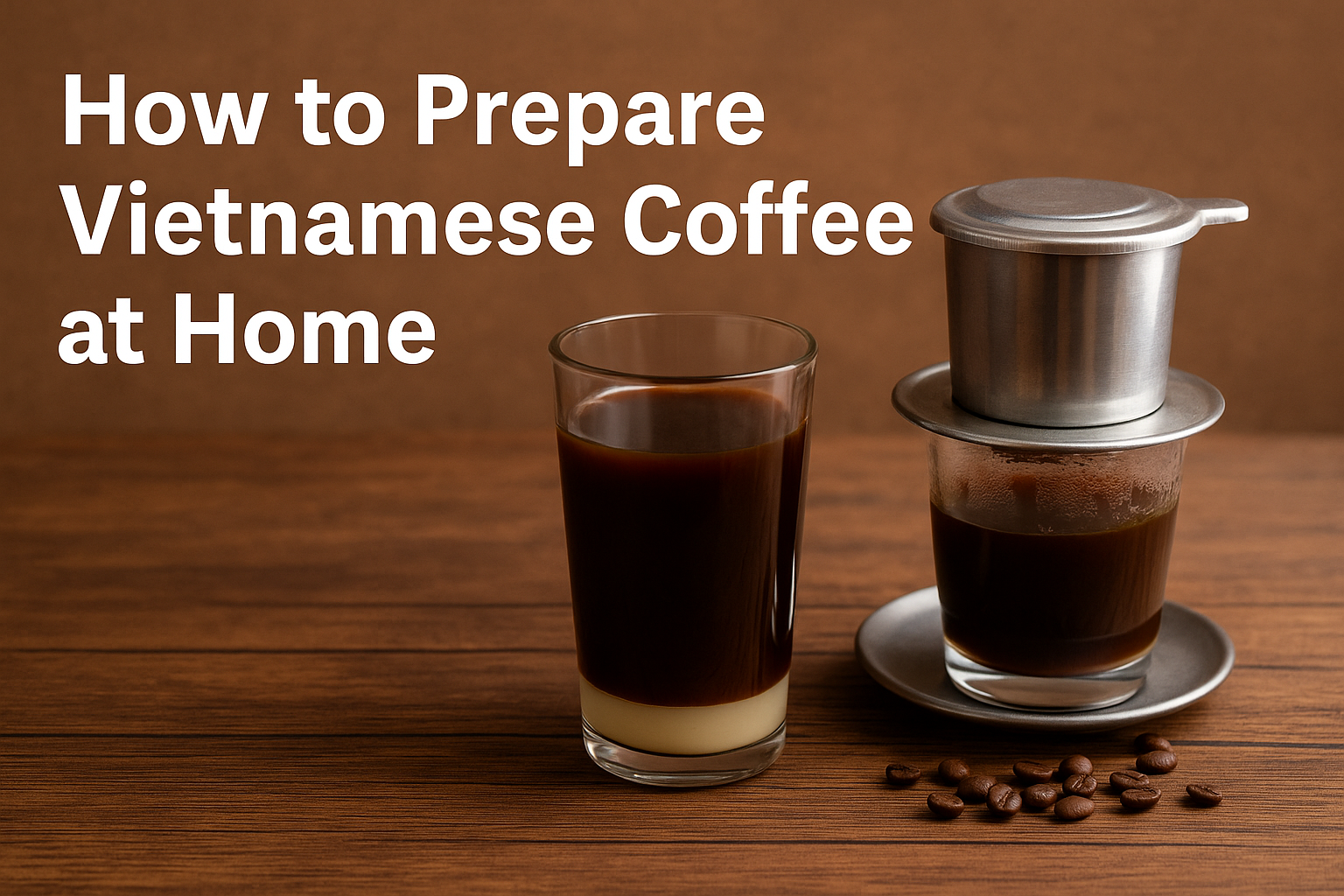Vietnamese coffee has become increasingly popular across the world for its bold flavor, rich aroma, and unique preparation method. Unlike other coffee traditions, Vietnamese coffee is deeply tied to history and culture, offering not just a drink but an experience.
What makes it truly special is its combination of strong dark-roasted beans, often Robusta, and the distinctive use of sweetened condensed milk. This results in a beverage that is both powerful and smooth, striking a balance between intensity and sweetness.
For coffee lovers who enjoy exploring global coffee traditions, learning how to prepare Vietnamese coffee at home is both rewarding and surprisingly easy. With the right tools and ingredients, you can replicate the authentic flavors found in Vietnamese cafés and street stalls.
A Brief History of Vietnamese Coffee
Coffee was first introduced to Vietnam by French colonists in the 19th century. While it began as a luxury, it quickly integrated into Vietnamese daily life. Today, Vietnam is the second-largest coffee producer in the world, known primarily for its Robusta beans, which have a stronger, more bitter taste than Arabica.
Because fresh milk was scarce in Vietnam during the colonial period, people began using canned sweetened condensed milk as a substitute. This adaptation became permanent and is now one of the defining features of Vietnamese coffee.
Over time, unique recipes and brewing techniques developed, such as the use of the phin filter and variations like egg coffee, coconut coffee, and iced milk coffee.
Essential Equipment and Ingredients
To prepare authentic Vietnamese coffee at home, you only need a few items:
- Phin filter: A small metal drip filter designed specifically for Vietnamese coffee.
- Coffee: Traditionally, strong dark-roasted Robusta beans, though blends of Arabica and Robusta also work well.
- Sweetened condensed milk: The signature ingredient that adds creaminess and sweetness.
- Boiling water: To extract the coffee.
- Glass or cup: Heatproof glass is traditionally used.
- Ice cubes (optional): For iced coffee variations.
If you do not have a phin, you can adapt the recipe with a French press or pour-over, but the phin provides the slow, drip-by-drip process that creates the authentic flavor.
Step-by-Step Guide: Traditional Vietnamese Coffee
Step 1: Prepare the condensed milk
Add 2 tablespoons of sweetened condensed milk to the bottom of a heatproof glass or cup. This will serve as the sweet and creamy base for your coffee.
Step 2: Measure the coffee
Place the phin filter on top of the glass. Add about 2 tablespoons of ground coffee to the filter. Tap the filter lightly to level the grounds, then insert the press disk to compact them gently.
Step 3: Bloom the coffee
Pour a small splash of hot water (around 2 tablespoons) into the filter to allow the coffee to bloom. This step helps release aromas and ensures even extraction. Wait 30 seconds.
Step 4: Brew the coffee
Fill the filter with hot water until it reaches the top. Cover the filter with its lid and allow the coffee to drip slowly into the glass. The brewing process usually takes 4–5 minutes. The slow drip is crucial for achieving the strong and bold flavor characteristic of Vietnamese coffee.
Step 5: Stir and enjoy
When brewing is complete, stir the condensed milk and coffee together until fully blended. For cà phê sữa nóng (hot milk coffee), enjoy it as is. For cà phê sữa đá (iced milk coffee), pour the mixture over a tall glass filled with ice cubes.
Popular Variations of Vietnamese Coffee
Iced Black Coffee (Cà phê đá)
For a stronger and more bitter drink, skip the condensed milk. Brew the coffee with the phin and pour it directly over ice.
Egg Coffee (Cà phê trứng)
A specialty from Hanoi, this dessert-like drink is made by whipping egg yolks with sugar and condensed milk until frothy, then topping a strong coffee with the mixture. The result is creamy, sweet, and luxurious.
Coconut Coffee
In modern cafés, coffee is often blended with coconut milk or coconut cream for a tropical twist that pairs well with the boldness of Robusta beans.
Yogurt Coffee (Cà phê sữa chua)
Another creative version combines strong coffee with tangy yogurt, offering a unique mix of flavors and textures.
Tips for Brewing the Perfect Vietnamese Coffee
- Choose the right beans: Authentic Vietnamese coffee usually uses Robusta beans, but blends of Arabica and Robusta can soften the bitterness.
- Grind size: Use a medium-coarse grind to ensure a steady drip without clogging the phin.
- Be patient: Vietnamese coffee is meant to brew slowly. Rushing the process will result in weak flavor.
- Adjust sweetness: Start with 2 tablespoons of condensed milk, but adjust to your preference. Some prefer it less sweet, while others enjoy a dessert-like drink.
- Experiment with serving styles: Try both hot and iced versions to see which suits your taste best.
Why Vietnamese Coffee Stands Out
Vietnamese coffee is more than a beverage—it is part of daily culture and social life. Coffee shops in Vietnam are vibrant spaces where people gather to talk, work, or simply relax.
The use of condensed milk reflects the ingenuity of adapting to local conditions, while the phin filter symbolizes patience and tradition.
What makes Vietnamese coffee special is its balance: strong yet smooth, bitter yet sweet. It is a drink that reflects both history and modern creativity, with variations that appeal to all kinds of coffee lovers.
Final Thoughts
Preparing Vietnamese coffee at home is a simple yet enriching way to experience another culture’s approach to this beloved drink.
With just a phin filter, robust coffee, and condensed milk, you can bring the authentic flavors of Vietnam into your kitchen.
Whether you enjoy it hot, iced, or with unique twists like egg or coconut coffee, Vietnamese coffee is a delightful tradition that combines intensity, sweetness, and heritage in every cup.
